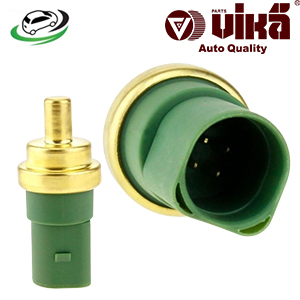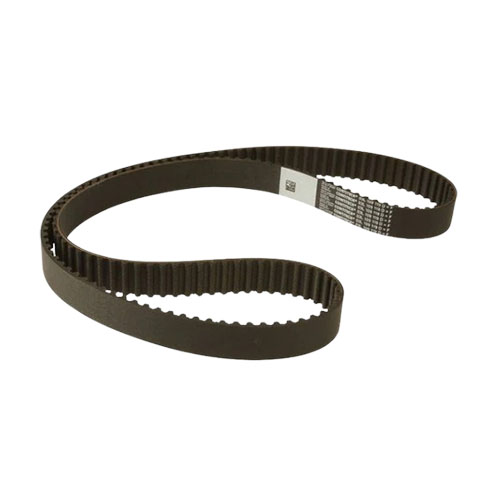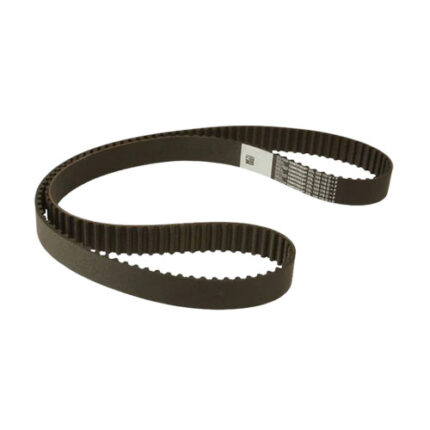-10%
Get Audi A3 8P FWD TDI Timing Belt 03L109119F in Kenya
The timing belt is a critical component of an internal combustion engine, responsible for synchronizing the rotation of the crankshaft and camshaft(s). This synchronization ensures that the engine’s valves open and close at the correct times during the intake and exhaust strokes, which is vital for efficient engine operation. In this detailed overview, we will explore the function, importance, types, maintenance practices, and potential consequences of timing belt failure.
Function of the Timing Belt
The primary function of the timing belt is to synchronize the movement of the engine’s camshaft(s) and crankshaft. The crankshaft is connected to the pistons, which move up and down within the engine’s cylinders. The camshaft(s) control the opening and closing of the engine’s intake and exhaust valves. These components must work in precise harmony to allow the engine to operate efficiently.
The timing belt ensures that the crankshaft and camshaft(s) rotate in unison, maintaining the correct timing of the engine’s valve operation. This synchronization is essential for the engine’s four-stroke cycle, which consists of the intake, compression, power, and exhaust strokes. If the timing is off, the valves may open or close at the wrong times, leading to poor engine performance, reduced fuel efficiency, and even severe engine damage.
Importance of the Timing Belt
The timing belt plays a vital role in the overall functionality and reliability of an engine. Here’s why it is so important:
- Precise Engine Timing: The timing belt ensures that the engine’s valves open and close at the correct times in relation to the pistons’ movements. This precise timing is essential for efficient combustion, optimal power output, and smooth engine operation.
- Preventing Engine Damage: In many engines, particularly those with an interference design, the timing belt prevents the pistons from striking the valves. If the timing belt fails or slips, the valves and pistons can collide, causing catastrophic engine damage that may require extensive and costly repairs.
- Maintaining Fuel Efficiency: Proper engine timing, maintained by the timing belt, is crucial for optimal fuel combustion. When the timing is correct, the engine burns fuel more efficiently, resulting in better fuel economy and lower emissions.
- Supporting Other Engine Components: The timing belt often drives other components, such as the water pump, oil pump, and balance shafts. This means that the timing belt also plays a role in the proper functioning of these essential systems.
Types of Timing Belts
Timing belts are generally made from durable materials like rubber, neoprene, or a combination of these materials reinforced with fibers such as fiberglass or Kevlar for added strength. There are two main types of timing belts, each with its own design characteristics:
- Rubber Timing Belts:
- Description: Traditional timing belts are made of high-strength rubber reinforced with fibers. These belts are designed to be flexible yet durable, capable of withstanding the stresses of engine operation.
- Advantages: Rubber timing belts are relatively quiet in operation and provide reliable performance under normal driving conditions. They are also cost-effective and widely used in a variety of vehicles.
- Disadvantages: Rubber timing belts can degrade over time due to exposure to heat, oil, and other environmental factors. They require periodic replacement to prevent failure.
- Chain Timing Belts (Timing Chains):
- Description: Although not technically a “belt,” timing chains serve the same purpose as timing belts but are made of metal. Timing chains are more commonly found in modern engines and high-performance vehicles.
- Advantages: Timing chains are highly durable and typically last much longer than rubber timing belts. They are less prone to stretching or breaking and can often last the lifetime of the engine.
- Disadvantages: Timing chains are noisier than rubber belts and can be more expensive to manufacture and repair. They also require more complex tensioning systems.
Signs of a Failing Timing Belt
It’s crucial to recognize the signs of a failing timing belt to prevent engine damage. Some common indicators include:
- Engine Misfires: If the timing belt slips or loses teeth, it can cause the engine to misfire. This happens because the camshaft(s) and crankshaft are no longer synchronized, leading to incorrect valve timing.
- Ticking Noise from the Engine: A ticking noise coming from the engine bay can indicate that the timing belt is worn or damaged. This noise may be caused by the belt slipping on the pulleys or by the tensioner not maintaining proper tension.
- Difficulty Starting the Engine: A failing timing belt may cause the engine to have difficulty starting or not start at all. This is because the belt is responsible for maintaining the precise timing needed for the engine to fire up.
- Oil Leaks: Timing belts are often housed within a protective cover. If the cover’s seal fails or if there is a leak from the camshaft or crankshaft seals, oil can contaminate the timing belt, leading to premature wear and eventual failure.
- Engine Runs Rough or Lacks Power: If the timing belt is not functioning correctly, the engine’s timing will be off, causing it to run rough, lack power, or stall. This can also lead to increased fuel consumption and higher emissions.
Timing Belt Maintenance
Regular maintenance of the timing belt is essential to ensure the longevity and reliability of the engine. Here are some key maintenance practices:
- Scheduled Replacement: Most vehicle manufacturers recommend replacing the timing belt at specific mileage intervals, typically between 60,000 and 100,000 miles, depending on the vehicle. Adhering to this schedule can prevent unexpected failures.
- Inspecting the Belt: Regularly inspecting the timing belt for signs of wear, cracks, or fraying is important. If any damage is found, the belt should be replaced immediately to avoid potential engine damage.
- Replacing Tensioner and Pulleys: When replacing the timing belt, it’s also advisable to replace the tensioner, pulleys, and any other related components. These parts wear out over time, and replacing them ensures the new belt operates under optimal conditions.
- Avoiding Oil Contamination: Keeping the timing belt clean and free of oil or coolant leaks is crucial for its longevity. If the belt becomes contaminated, it can degrade more quickly, leading to premature failure.
- Professional Installation: Due to the critical nature of the timing belt, it’s important to have it replaced by a qualified mechanic. Incorrect installation can lead to improper engine timing, resulting in poor performance or engine damage.
Consequences of Timing Belt Failure
Timing belt failure can have severe consequences, particularly in engines with an interference design. Here’s what can happen if the timing belt fails:
- Valve and Piston Collision: In an interference engine, if the timing belt fails, the pistons and valves can collide. This collision can bend or break the valves, damage the pistons, and potentially crack the cylinder head or block. Repairing this damage is often extremely expensive and may require a complete engine rebuild or replacement.
- Engine Seizure: A broken timing belt can cause the camshaft(s) to stop rotating while the crankshaft continues to turn. This can lead to the valves being struck by the pistons, potentially seizing the engine and causing catastrophic damage.
- Loss of Power and Control: If the timing belt fails while driving, the engine will lose power, potentially causing the vehicle to stall. In some cases, this can result in a loss of control, particularly if it happens at high speeds or in heavy traffic.
- Expensive Repairs: Timing belt failure can lead to significant repair costs, especially if it results in engine damage. The cost of replacing a timing belt is relatively minor compared to the potential expense of repairing or replacing a damaged engine.
Follow us on Facebook for more parts.




